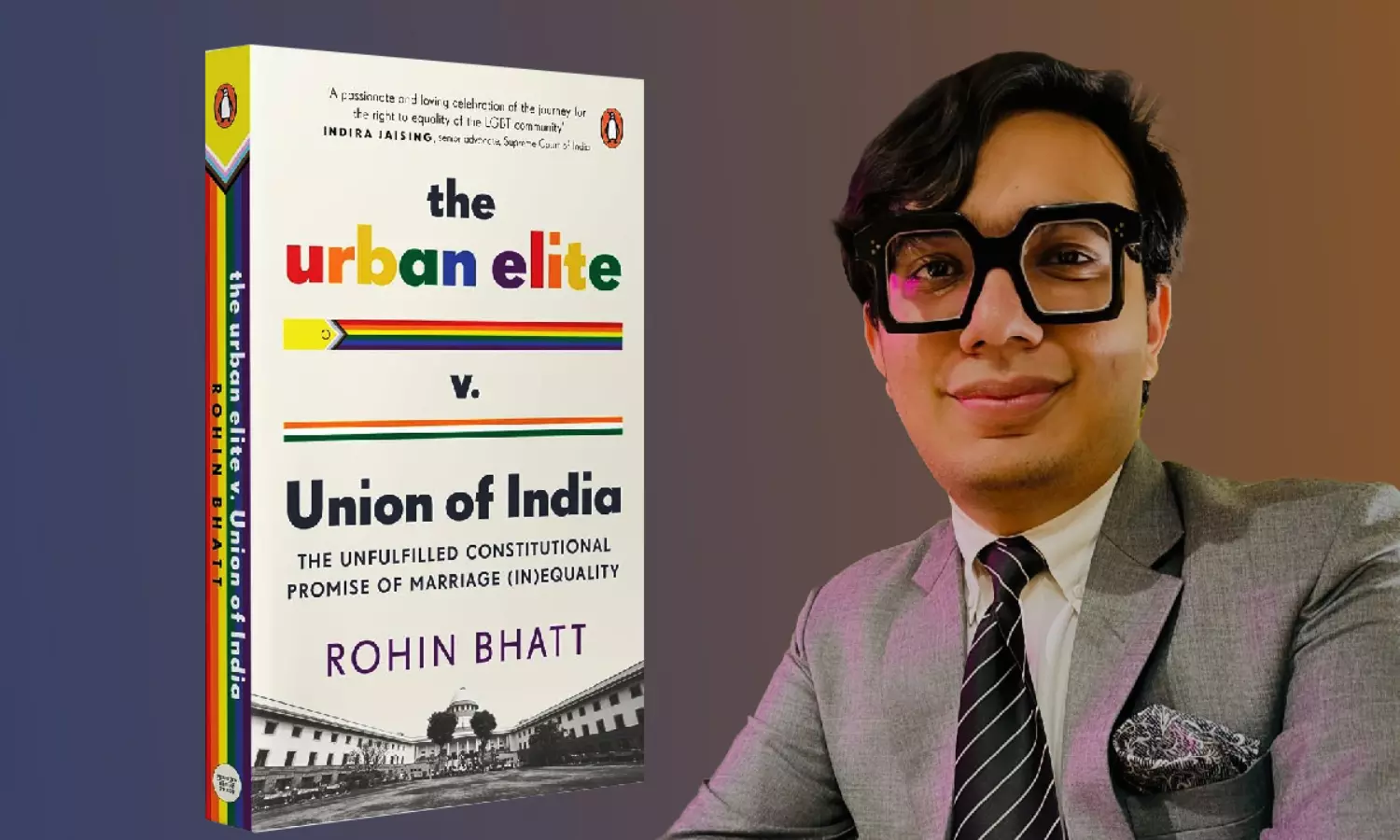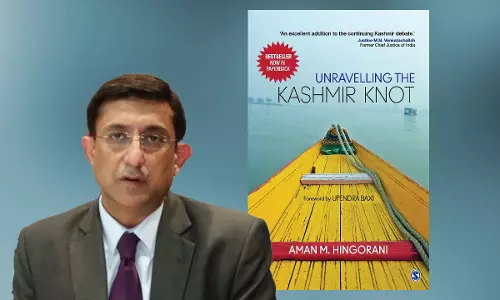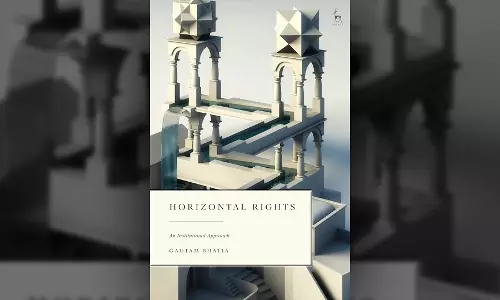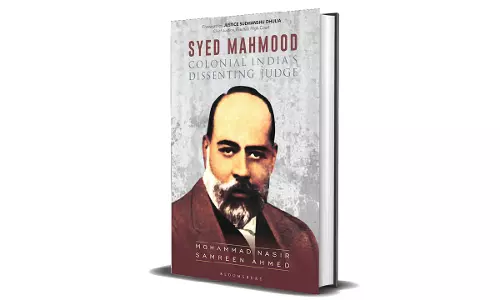
In October, last year, the Supreme Court constitution bench in Supriyo v. UOI unanimously held that there is no fundamental and unqualified right to marry. For most of us, the judgment was like any other judgment of the Supreme Court except for the possibility that it could have canvassed a set of fundamental rights. But members of the queer community had hoped for their lives to be changed;...
In October, last year, the Supreme Court constitution bench in Supriyo v. UOI unanimously held that there is no fundamental and unqualified right to marry. For most of us, the judgment was like any other judgment of the Supreme Court except for the possibility that it could have canvassed a set of fundamental rights. But members of the queer community had hoped for their lives to be changed; as it had, five years ago when homosexuality was finally decriminalised by the Supreme Court in Navtej Singh Johar.
No one knows better than the Indian queer community the decades it took to fight historical discrimination and injustice (Naz Foundation: decriminalised homosexuality for the first time). Still, one judgment to lose it all, as had happened in Suresh Koushal (overturned Naz Foundation), and the battle after that (Navtej finally overturned Suresh Koushal).
Since marriage equality proceedings were live-streamed, they had garnered attention from all walks of life and perhaps from the whole country. But what went into the backstory of the nine days of hearing the case is surely a story that adds more context and meaning to the social momentum that had finally ended up in the Supreme Court, when the Court transferred all petitions before High Courts to itself.
Rohin Bhatt's new book titled 'The urban elite v. Union of India' answers many questions that remained unknown or unsaid. Divided into 7 Chapters, Rohin's book would give the readers a wholesome understanding of the Indian queer social movement: what it sought to achieve, how much it has achieved so far and what else it intends to achieve.
In the first two chapters, Rohin gives a glimpse of his own life: from being bullied to almost getting arrested for kissing a man to having secured a Masters degree from Harvard University to make up for the world of his alternative sexuality. All these could be instances for most of us, but for Rohin, these are his lived experiences of fear, stigma, and the everyday struggle of a queer person who has to fight every battle of life to get equal rights and live an ordinary life like anyone of us.
A mix of both legal perspective and queerness, the next chapters are fully dedicated to analysing the marriage equality proceedings: the arguments and counterarguments of the parties, the judgment and what went wrong with it. It also addresses where the petitioners had gone wrong, perhaps for the lack of coordination and the disparity amongst them in seeking a remedy from the Court.
But what grabs attention is the fact that Rohin chose to call out the State for being ignorant of the plight of the queer community in India. He writes that it is one thing to take a principled stand that the State does not want to recognise any other form of marriage other than between a man and a woman. But it is unacceptable and unwarranted to reduce the queer community to arguments like 'how would Court regulate '+' in LGBTQIA+ as there are 72 different shades and spectrums' or 'gender changes according to mood swings'. Or the final blow by calling queer community an 'urban elitist', which, at least, the Court unequivocally recognised that it is neither urban nor elitist phenomenon.
As one dives deep into the book, Rohin refers to a trend emerging before the Supreme Court- 'illegal but permissible'. This fits well in the marriage equality case as the Court acknowledged that queer community continues to face discrimination and exclusion and that nothing much has changed after Navtej's judgment. Discrimination, particularly on grounds of sexual orientation is recognised as discrimination on grounds of 'sex' under Article 15(1). But unlike the last two times, during Navtej and in NALSA which recognised transgender persons as the third gender, the Court left it as it is.
Rohin writes: “The Supreme Court notes, almost unanimously that there is indirect discrimination but finds it permissible to allow it to happen citing supposed institutional limitations.”
There is another facet to this trend which is that the Court chose to engage in dialogue or worse act like a broker when the issue needed adjudication or more specifically remedial measures. For instance, Rohin writes: “during the marriage equality, the Court suggested that the petitioners sit with the government and try to create a set of laws and legislative reforms to enable queer people to achieve a semblance of marriage without marrying.”
He rightly questions, “Should matters of fundamental rights be a site of dialogue? Or do they deserve a proper adjudication?”
Of course, amidst this, Rohin acknowledges the larger questions posed in such cases, which is: "Whether Courts are an appropriate forum to further the cause of social justice movements?"
For the most of it, indeed, it's not; because issues that may bring drastic overnight change in the socio-political structure of the country require to be debated. The right forum for that is the Parliament, or the State Legislature as the case may be.
A very appropriate example could be the case of Roe v. Wade (1973), where the Supreme Court of the United States recognised the right to abortion is embraced in personal liberty protected by the Due Process Clause of the Fourteenth Amendment.
Former Associate Justice of the Supreme Court of the United States, Ruth Bader Ginsburg had once faced criticism from various women's rights organisations for criticising the Supreme Court on the judgment. However, the criticism lacked the foresight with which Ginsburg saw the outcome, which later came out in the form of another judgment in Dobbs v. Jackson overruled the 50-year-old judgment, holding that the US Constitution did not recognise the unenumerated right to abortion.
Ginsburg had clarified that she was not against women having the right to abortion. She had raised concern for the need for judicial restraint that could have been exercised as many federal states were considering to liberalise abortion laws and such political changes should have been initiated by the legislature. Equally, she had made a case where the Court must not wait for the political process to shape the rights of citizens. This was in Brown v. Board of Education of Topeka, where the Supreme Court of United States had held that racial segregation in public schools based on the 'separate but equal' doctrine violated the equal protection principle.
Our constitutional Court has not shied away from doing judicial activism in the face of flagrant violations of fundamental rights. For instance, back in 1997, the Supreme Court laid down the guidelines against the prohibition of sexual harassment in the workplace. It was the law of the land for 16 years before Parliament enacted legislation in 2013. But some of the recent events such as "demolition justice" and the Supreme Court's failure to take suo moto cognisance perhaps show that gone was that era of timely judicial intervention.
Rohin's book will surely leave you with two questions. First, why did the Court choose to not act while recognising that there is, in fact, a violation of fundamental rights? What happens to the adage of 'Ubi jus ibi remedium'? If it accepted that such exclusion violated the equality code of the Constitution, wouldn't the logical sequitur be remedying it?
Second, now that the Court has held that there is no fundamental and unqualified right to marry, what are the consequences of not being able to knock on the doors of justice when any State action or legislation which deprives the right to marry violates Article 14, 19(1)(a) or 21. Although the Special Marriage Act, 1954, allows secular marriages, in the face of "love-jihad" and anti-conversion laws enacted by many States, will the Courts come forward to protect the individual elements of marriage: dignity, autonomy and choice?
The review petition in the marriage equality case is yet to be heard and these questions may find importance in future.
Overall, Rohin's book 'the urban elite v. Union of India' is a decent read, especially for law students who want to understand the constitutional giving and misgiving of the marriage equality judgment.
Gursimran is a reporter with LiveLaw.




